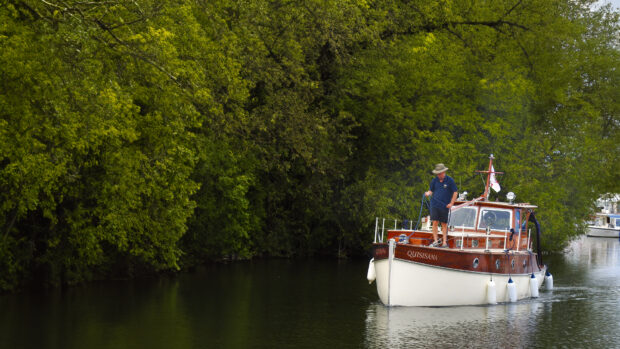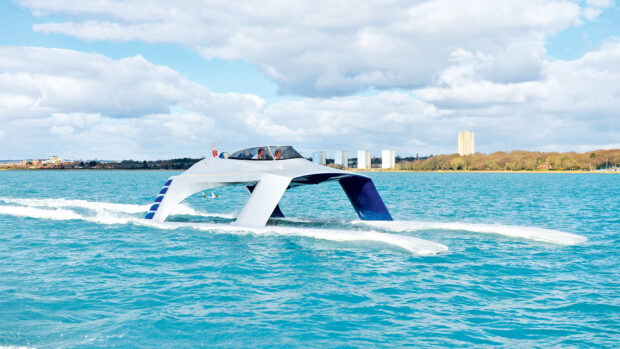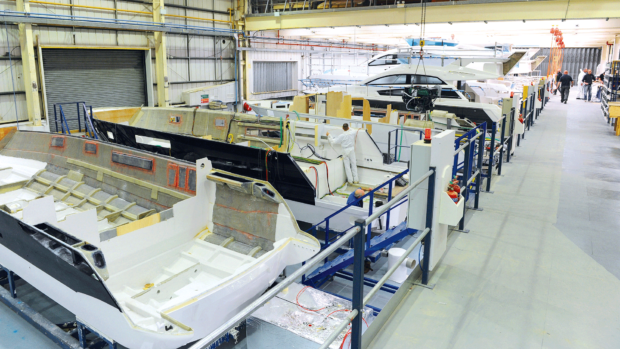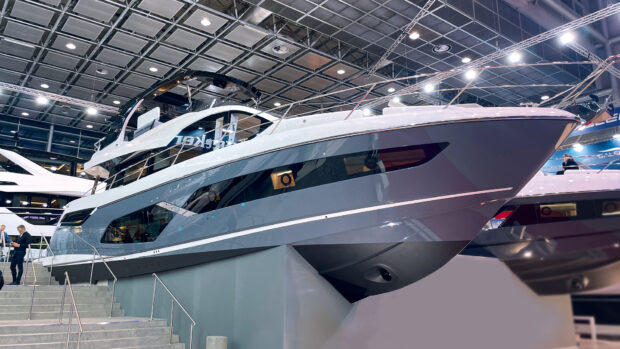Rick Channon’s upgrade plans take a hit when his boat, his kit and his launch date collide
This article was supposed to be about the installation of 3D RealVision Sonar – only it isn’t! As it turned out, time, money and emotions would engage in a battle that made everything far more complex than I had anticipated. But let’s rewind to the very start.
It all began during the winter when I decided to upgrade the navigation equipment on Greyfin, my Beneteau Antares 8. At the time, it only had a small Raymarine multifunction display (MFD) and a few analogue dials at the helm.
The plan was to replace the MFD with something larger and then have a second MFD for data and to install an autopilot. I had been to the Southampton Boat Show in September and had broadly decided what I wanted, but one bit of tech that really caught my eye was Raymarine’s 3D RealVision sonar.
The fishfinder function on my chartplotter is probably the one I use the most, as a lot of my boating is done locally and involves anchoring up river or on the coast. I don’t do long passages, my engine doesn’t talk to the MFD and I don’t have radar, so with a lot of functionality wasted, I really wanted to exploit the part geared to my needs – namely, enhancing the sonar image with a sub-surface 3D view of what was all around me rather than what was directly under me.
That would be particularly handy because when I anchor, I often swing through 180 degrees, so it would be reassuring to know that the chain is not likely to snag on a submerged log or an unmarked lobster pot that a standard down-vision fish finder would only see if you passed directly over it.

Replacing the original MFD with a larger one wasn’t an issue…
Early obstacles
I chose to stick with a Raymarine MFD as not only would the functionality be familiar to me but it would also ensure compatibility with the wiring and other equipment. I selected the top-of-the-range RealVision model, as this would give me the 3D capability I wanted.
I was advised right from the outset by Raymarine that I would need to upgrade to a pair of through-hull transducers because on a hull with a 20-degree deadrise, you need one on each side to avoid a blind spot created by the angle of installation and the keel. But this immediately gave me pause for thought…
I’d have to drill through my precious hull! Could I bring myself to inflict this pain on my beloved boat? And it was also becoming apparent that I was going down a very expensive rabbit hole. Not only was this going to add significant complexity but it was also going to come at a considerable cost. The transducers alone cost as much as the chart plotter and then there would be the fitting costs incurred by the appointment of both an electrical engineer and a shipwright.
Article continues below…
Undaunted, I engaged Billy from BT Marine Electronics in Falmouth to give me a quote and to investigate possible options. Could I use a simple transom-mounted transducer like you would find on a RIB? After all, my boat is pretty small.
Billy strongly advised against it. Unlike an outboard-powered boat, my shaft-driven boat would see the propeller positioned ahead of the transducer, which would mean the water turbulence at the transom would be too great and would compromise the sonar image. So with the simplest option falling at the first hurdle, I was back to the twin transducers.

The hole for the old transducer hole was too close to the keel
I persevered and got a quote from a shipwright. He took one look, drew breath in through his teeth and told me that it wasn’t as straightforward because Greyfin had a twin-skinned hull. That would apparently involve a couple of days’ work just to cut out and make good the new holes for the transducers. “Can’t we find a location that doesn’t have the inner moulding?” was my desperate plea!
Well apparently not, as the transducers have to be placed in smooth water flow, not too far forward where the bow might rise out of the water, and not too far aft where you’ve now already passed over the seabed you wanted to see. I was advised that the best place to locate them is in the same area the manufacturer had chosen for the original transducer, as with a clean sheet they had obviously selected the optimum location.

A second, smaller MFD displays data
Hole positioning
Okay, time for a deep breath. All the simple options had been eliminated. But even with the extra cost of the chartplotter, the cost of the twin 3D transducers and now the shipwright cost, I was still determined to plough on. I instructed Billy, who had been very patient during my deliberations, to proceed with the installation.
But no sooner had he started than he realised the existing transducer hole could not be used on one side as the new transducer’s external component was marginally wider and would impinge on Greyfin’s short keel.
That meant the old hole would have to be filled and moved away from the keel. Time was running out before my mid-April relaunch and the warm, dry days necessary for reliable glasswork were few and far between!

Installing the new RealVision 3D transducers proved challenging
Time to compromise
So with my head now ruling my heart I decided to delay the installation of the 3D transducers until the autumn and link the new MFD to the existing transducer for this season. After all, the rest of the equipment went in as planned so I’ve got enough new toys to play with for now, and in the meantime I hope to get feedback from people who’ve installed 3D sonar to get a true idea of its performance, especially in shallow water.
But probably the most significant hurdle for me is not the expense involved but the simple concept of adding extra holes to my hull. It goes against the grain, so if anyone can reassure me that it’s fine, then your moral support would be most welcome!
 If you enjoyed this….
If you enjoyed this….
Motor Boat & Yachting is the world’s leading magazine for Motoryacht enthusiasts. Every month we have inspirational adventures and practical features to help you realise your sailing dreams, as well as tests and news of all the latest motorboats.
Plus you’ll get our quarterly Custom Yachting supplement where we share the last on offer in the superyacht world and at the luxury end of the market.
Build your knowledge with a subscription delivered to your door. See our latest offers and save at least 30% off the cover price.



 If you enjoyed this….
If you enjoyed this….





